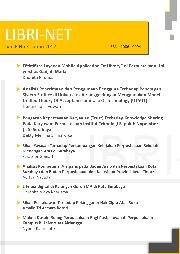Dental Journal (Majalah Kedokteran Gigi)
ISSN 1978-3728
Vol. 43 / No. 3 / Published : 2010-09
Order : 10, and page :151 - 156
Related with : Scholar Yahoo! Bing
Original Article :
Management of idiopathic alveolar bone necrosis associated with oroantral fistula after upper left first molar extraction
Author :
- Ni Putu Mira Sumarta *1
- Department of Oral and Maxillofacial Surgery Faculty of Dentistry, Airlangga University Surabaya - Indonesia
Abstract :
Background: In maxillary molar extraction, complications like bone necrosis and oroantral fistula can occur. The management of such complication is to treat any persisting maxillary sinusitis if present, prevent further antral contamination, wound bed preparation, and oroantral fistula closure with appropriate method. Purpose: This case report presents a treatment stage of an idiopathic upper alveolar bone necrosis and oroantral fistula that occurred 4 months after left upper first molar extraction. Case: A case of an idiopathic upper alveolar bone necrosis associated with oroantral fistula that occurred 4 months after left upper first molar extraction is presented. Patient suffered from pain and swelling at left upper jaw since 2 month before admission. There was a history of complicated tooth extraction 4 months earlier. Patient also complained pus and blood discharge from post extraction socket. Patient occasionally choked when drinking and fluids escaped through the nostril. There was a diffuse swelling in the left maxillary region; there was no hyperemia, with soft consistency and no pain on palpation. In the 26, 27 region there was a defect in the post extraction area, fragile bone exposed, granulation tissue, there was pain and pus occasionally escaped on palpation. Patient had already taken antibiotics. Case management: The treatment performed was treatment of persisting maxillary sinusitis with saline irrigation through fistula, surgical acrylic splint to reduce further contamination to the wound bed and antral cavity, and also inflammation reduction. Necrotomy on the necrotic bone and residual tooth roots extraction were done to prepare the wound bed. After there was no sign of infection in the wound bed, 2 stages of surgical closure were performed. Closure with buccal fat pad flap and buccal advancement flap was done after there was small wound dehiscence. Conclusion: Management of bone necrosis and oroantral fistula is to treat persisting maxillary sinusitis, preparation of wound bed using saline irrigation and the use of surgical acrylic splint to reduce contamination to the wound and antrum, and also necrotomy on the necrotic bone and infection source removal such as residual tooth roots. The fistula is then closed with appropriate method. The best and the easiet way to manage such complication is to prevent it from happening through a thorough pre operative assessment.
Keyword :
Alveolar bone necrosis, oroantral fistula, oroantral fistula closure,
References :
Almazrooa SA ,(2009) Bisphosphonate and nonbisphosphonate-associated osteonecrosis of the jaw. A review. - : JADA
Archive Article
| Cover Media | Content |
|---|---|
 Volume : 43 / No. : 3 / Pub. : 2010-09 |
|












